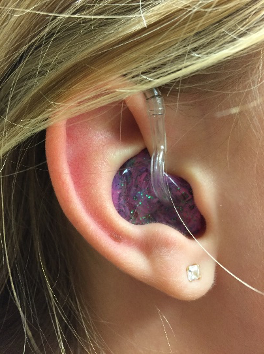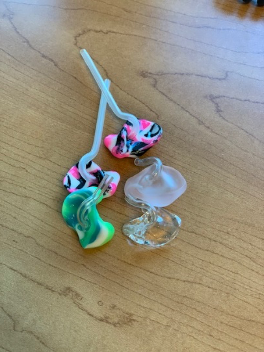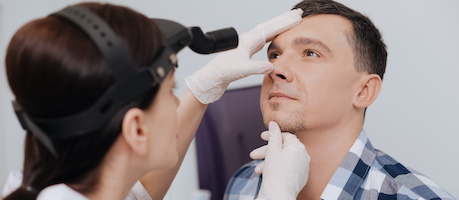For infants and young children, the most appropriate hearing aid style is called a behind-the-ear (BTE) hearing aid. These devices consistent of two main parts:
Hearing aid—this is an electronic piece that sits behind the ear. Hearing aids collect sound via microphones and amplify sounds based on the configuration and degree of a child’s hearing loss. Hearing aids are programmed by an audiologist using computer software. They come in a variety of colors and sizes depending on the severity of a child’s hearing loss.
Earmold—this piece sits in the ear and is made specifically to custom-fit your child’s ear. As a child grows, this piece is replaced. An earmold requires an impression to be taken in order to create a mold that fits perfectly in the child’s ear. Earmolds are typically made in a soft silicone material that can come in many different colors and designs.


As children with hearing loss grow into teenagers and young adults, different hearing aid styles (including receiver-in-the-canal hearing aids and custom products) may be recommended. At Advanced Hearing Services, a pediatric audiologist will work with your family to determine which type of hearing aid is best for your child. At the hearing aid fitting, the audiologist will program the hearing aid(s) specifically for your child using evidence based methods.
Children with hearing loss will need to be followed closely by both a pediatric audiologist and an ENT physician. Particularly when children are younger, they will need follow up appointments every few months to replace earmolds, monitor hearing, adjust hearing aid programming, and monitor progress.
Hearing Aid Accessories
Once a child begins walking, remote microphone accessories may be recommended to provide him/her with a clearer signal of his/her parent or caretaker’s voice. Remote microphones consist of a transmitter, which has a microphone that picks up the voice of the person speaking, and a receiver, which is attached to the hearing aid and picks up the signal sent from the transmitter. Remote microphone technology helps reduce the distance between the speaker and the child with hearing loss, background noise, and reverberation in the room.Most school-age children with hearing aids will use remote microphone technology (sometimes referred to as an FM system) in the classroom. Pediatric audiologists at Advanced Hearing Services can ensure that your child’s hearing aids are set up to work with the school provided remote microphone system.
Additional Information about Pediatric Hearing Loss/Hearing Aids
Hearing Aid Fitting and Evaluation for Infants
Communication Considerations A to Z
National Center for Hearing Assessment and Management, Utah State University
The Virginia Early Hearing Detection and Intervention Program



